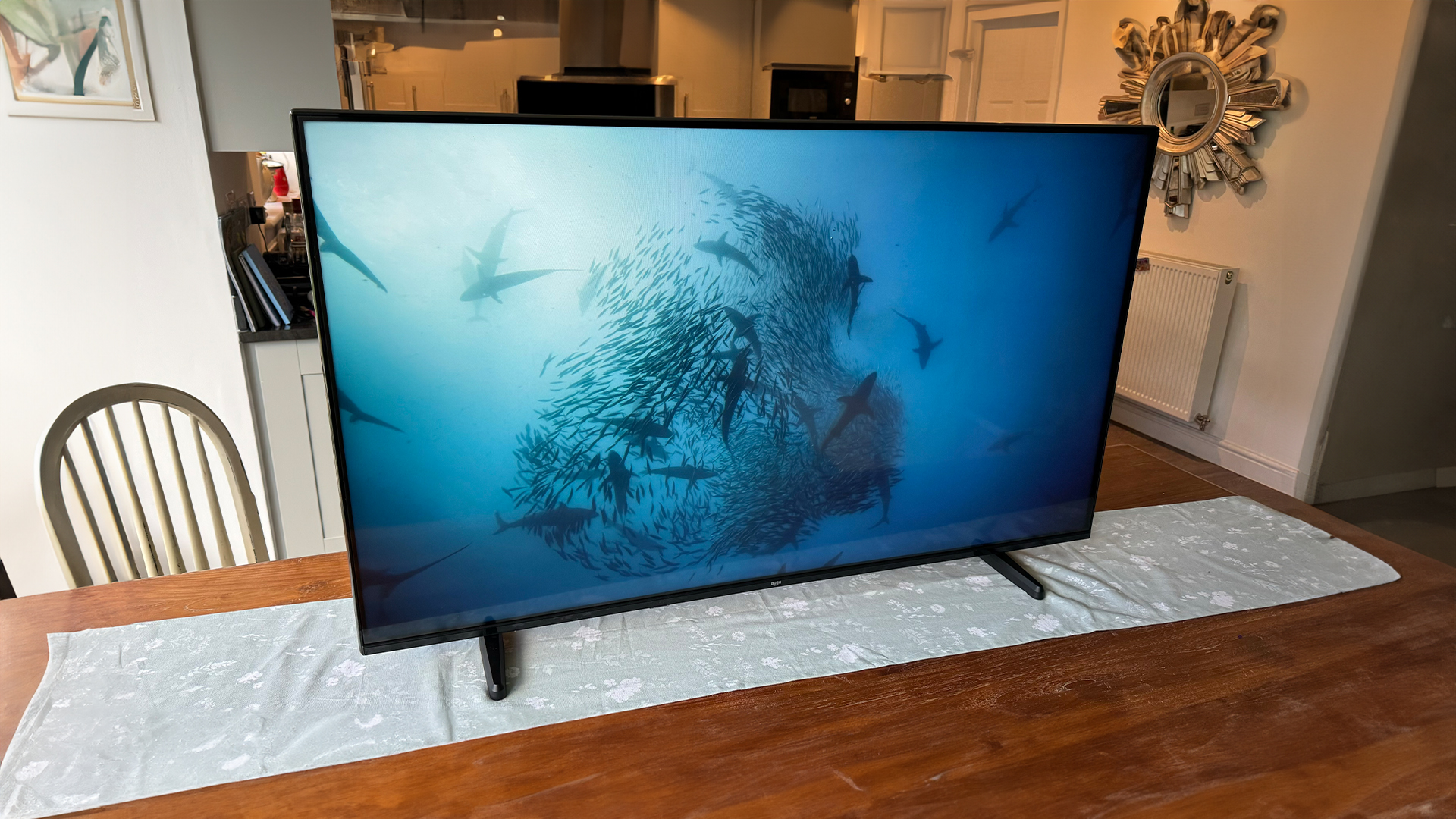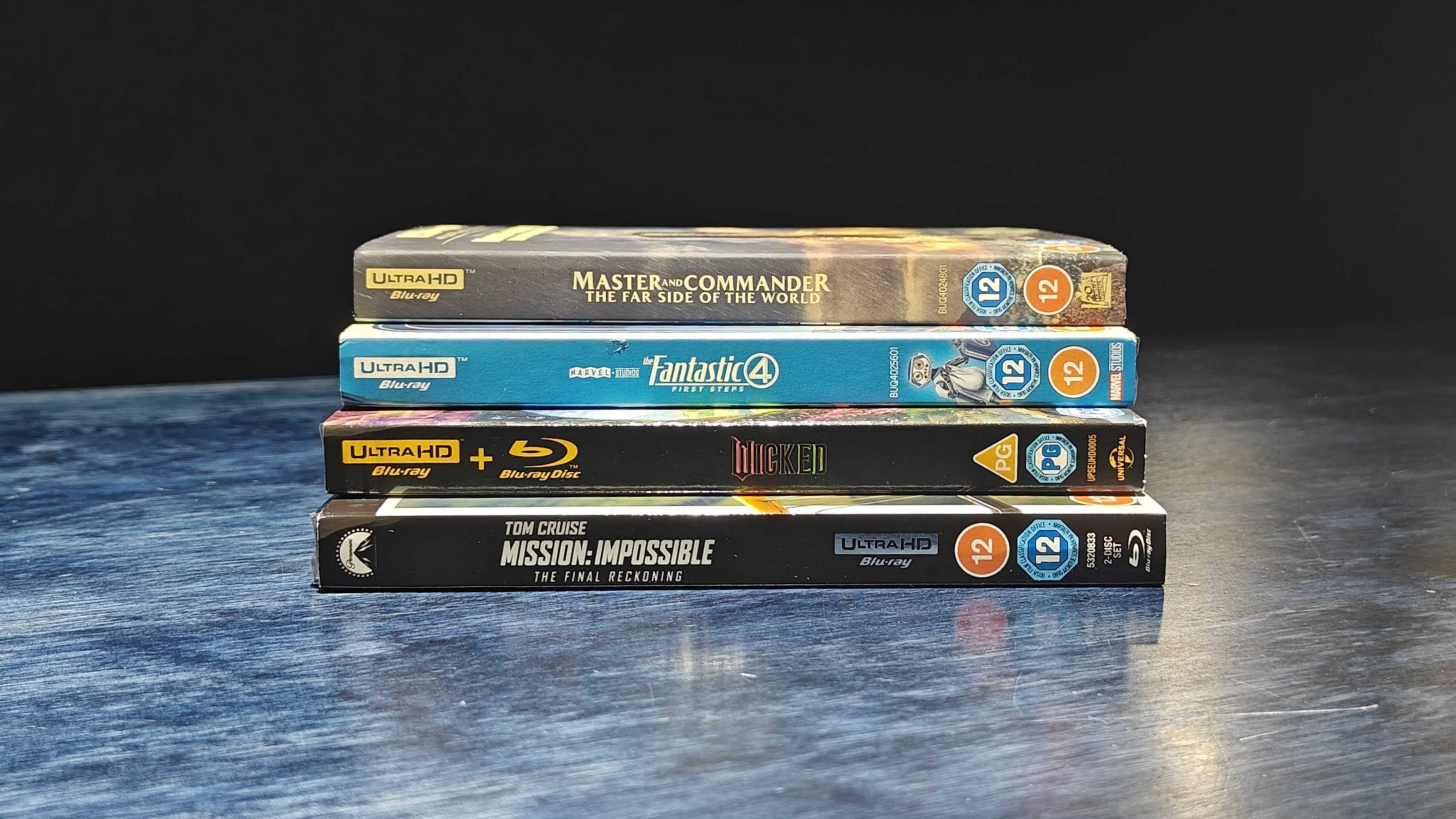What Hi-Fi? Verdict
The Bush 50UT24SB’s TiVo and Freely smarts prove a formidable combination – and they’re backed up by surprisingly competent picture quality
Pros
- +
Excellent two-tier smart features
- +
Good picture quality for the money
- +
Low input lag for gaming
Cons
- -
Very limited viewing angles
- -
Dark scenes look a little grey
- -
Pretty flimsy build quality
Why you can trust What Hi-Fi?
It’s been a while since a Bush TV found its way onto our test benches. More than a decade, to be precise – which would usually be more than long enough to make us wonder if a brand had perhaps bitten the dust, even temporarily, at some point in the intervening period. Bush, though, has been tootling merrily along throughout the past decade with a succession of TVs targeted very much at the budget end of the market; it just hasn’t really done anything to catch our eye.
That’s changed, though, with the new Bush 50UT24SB, thanks to not one but two unexpected innovations.
First, this TV is the first model launched in the UK to carry the new smart TV system from long-running (it celebrated its 25th birthday this year) independent media platform TiVo. Second, it’s also one of the first TVs to carry the UK’s new Freely platform, allowing you to live stream all BBC, ITV, Channel 4 and Channel 5 channels through the internet rather than having to watch them via an aerial or satellite dish.
Let’s just hope it can also find some decent picture and sound quality to keep its ground-breaking smarts company.
Price
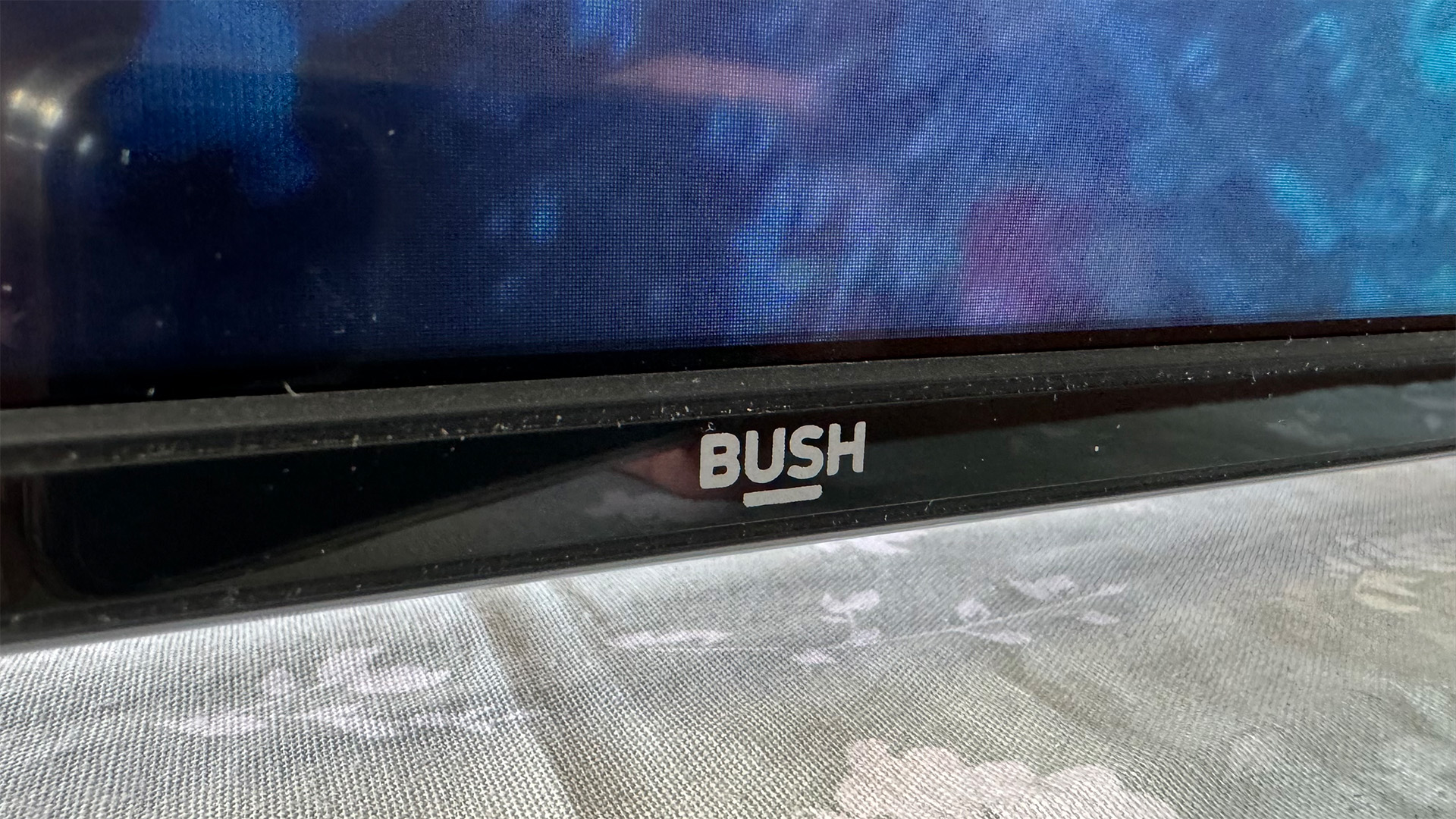
Remarkably for a 50-inch 4K TV with not one but two interesting new smart features to its name, the Bush 50UT24SB costs just £270. It’s not completely unique at that price level; Roku’s influence on the TV world in particular has given birth to some remarkably cheap sets from TCL and Hisense, for instance. But if Bush can find a solid performance to go with its eye-catching features, the 50UT24SB could be a serious bargain.
The UK-only UT24SB range also includes 65-, 58-, 55- and 43-inch screen sizes, boasting similarly high-value prices of £380, £320, £300 and £230 respectively.
Design
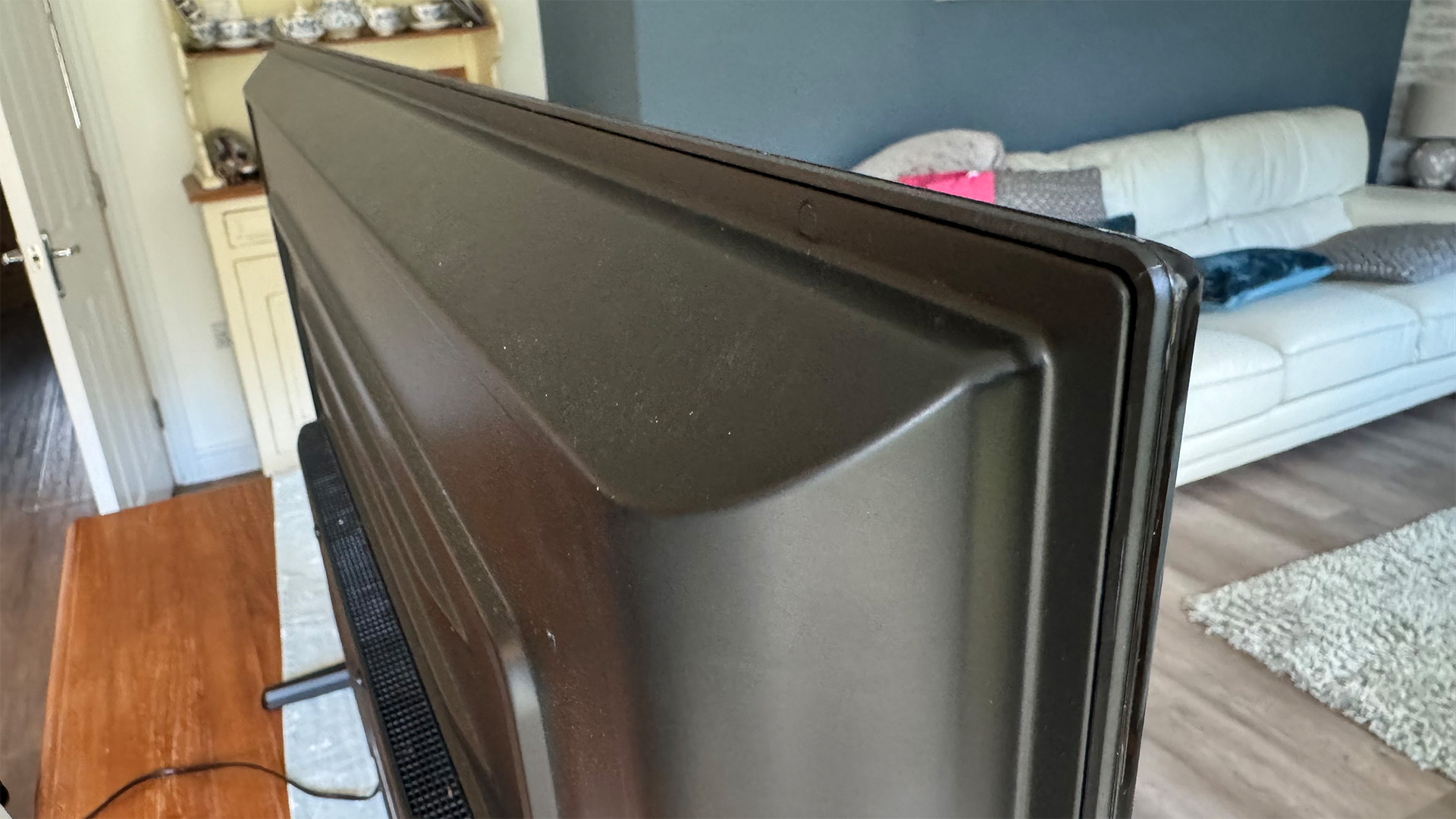
Not surprisingly for such a value-focused TV, the Bush 50UT24SB isn’t particularly glamorous. Its screen is mounted within a pretty plain-Jane black frame that isn’t slim enough to stand out by today’s standards and still looks a little cheap and plasticky despite wearing a glossy finish.
The latest hi-fi, home cinema and tech news, reviews, buying advice and deals, direct to your inbox.
While fixing it to its pair of deep grey feet, meanwhile, we’re also struck by how lightweight it is, confirming that its build quality is basic at best.
Bush’s set sticks out more than most TVs around the back, too, although the rear panel does feature some surprisingly attractive sculpting should you happen to be weirdly fond of looking at the back of your TV rather than the front.
The 50UT24SB’s remote is as plasticky as the TV it controls. Its large, button-heavy design is pretty uninspired too; the sort of thing you might find on a cheap universal remote for the most part. The only highlight is the presence of dedicated Netflix, YouTube, Disney+, TikTok and Freely buttons.
Features
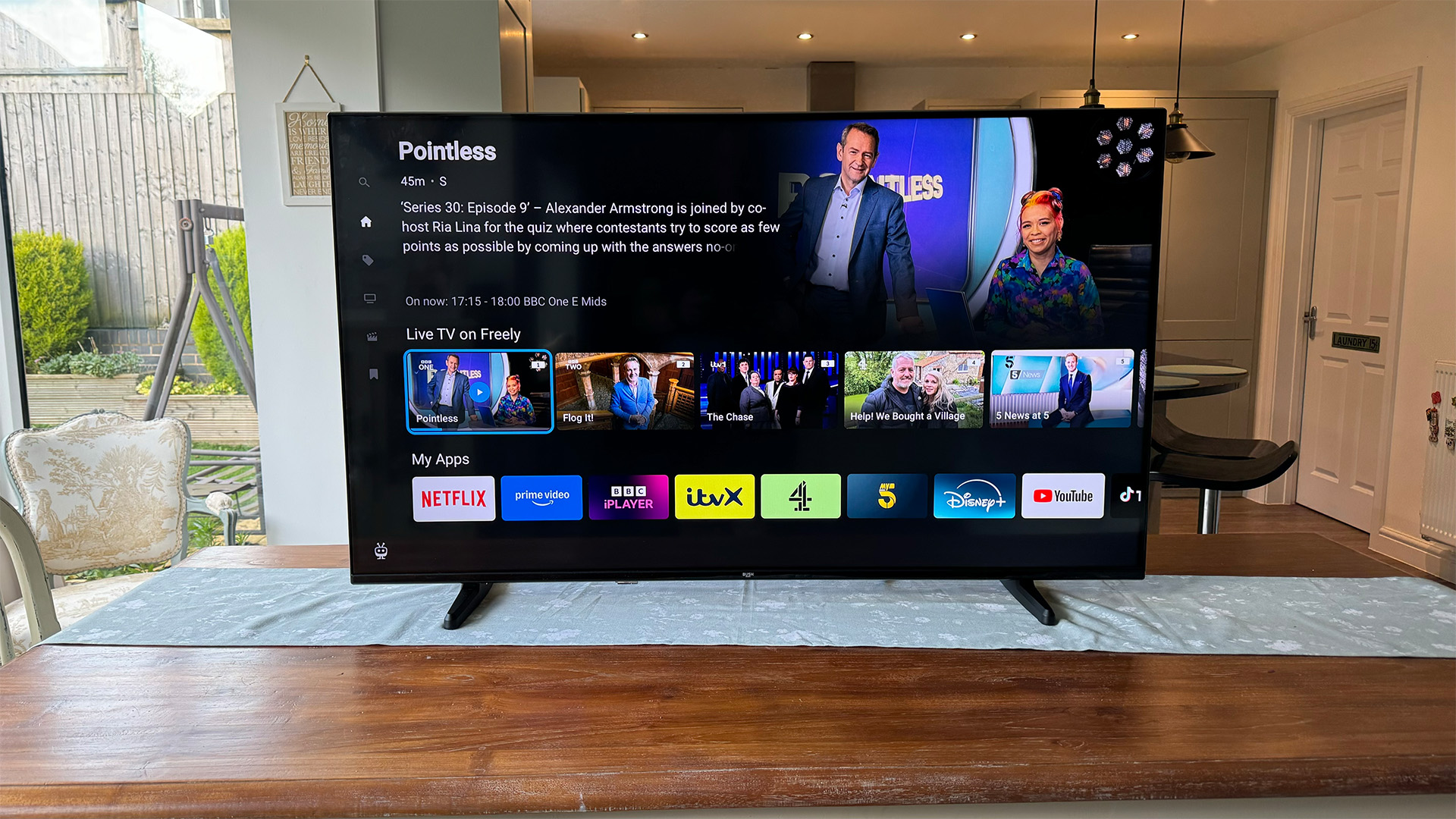
Being able to get a 50-inch TV of any sort for £270 counts as a feature in itself. But that’s just the start of the Bush 50UT24SB’s attractions.
Its most interesting feature is the new TiVo OS. TiVo’s expertise when it comes to creating easy-to-use interfaces and enabling content management/discovery is the stuff of legend. Even its very first PVR back in 1999 benefited from a level of intelligence when it came to recommending TV shows and films based on your viewing habits and preferences that hadn’t been seen before, and this expertise has continued to evolve since then across various home-grown and licensed home entertainment products. The TiVo OS, though, represents the first time the brand has developed a full smart TV platform that can be licensed for use in pretty much any TV that wants it.
It doesn’t take long using TiVo OS to figure out that it’s an excellent addition to the smart TV scene. Its presentation is simple but effective in its organisation and, as hoped, it’s excellent at finding and recommending content that you actually might be interested in. The order and themes of its various ‘content shelves’ boast a logic and usefulness that can only come from decades of refinement and user research.
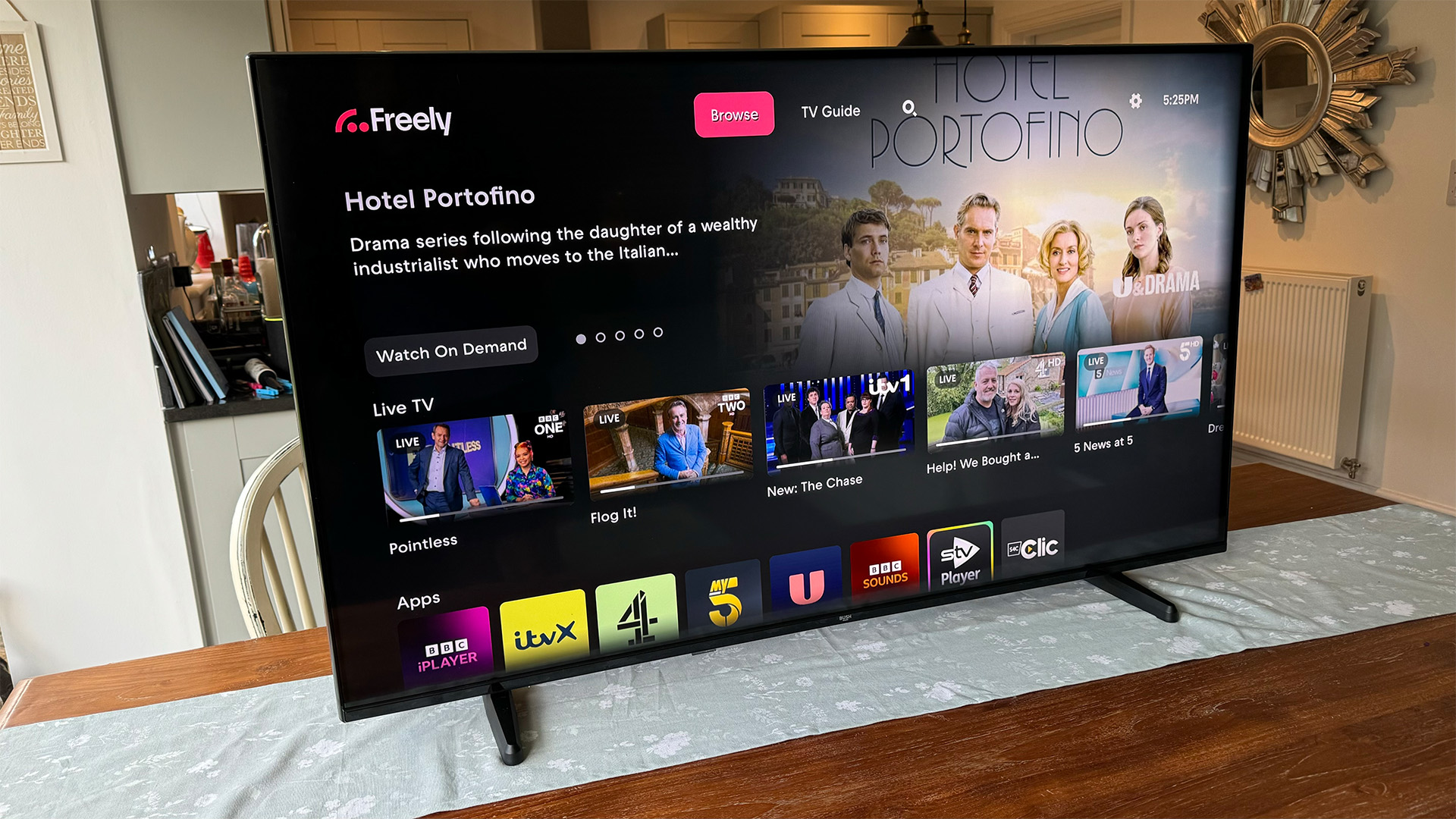
Screen size 50 inches (also available in 43in, 55in, 58in, 65in)
Type LCD
Backlight Full array LED
Resolution 4K
HDR formats HLG, HDR10, Dolby Vision
Operating system TiVo
HDMI inputs x 3
Gaming features VRR, ALLM, Dolby Vision gaming
Input lag at 60Hz 10.2ms
ARC/eARC eARC
Optical output? Yes
Dimensions (hwd, without stand) 65 x 167 x 7.9cm
What’s more, even though the 50UT24SB is very much a budget TV, the TiVo OS runs slickly and bug-free throughout our time with it. This has the potential to make it a firm favourite with any TV brands looking for an operating system that’s able to deliver the goods within the limited processing power capabilities of their most affordable TVs.
TiVo’s long industry experience and well-established relationships mean that TiVo OS is mostly a very content-rich smart system, too, with almost all of the main video streaming services present and correct. Including Freely, which, as with other implementations we’ve seen, delivers its fully streamed wares in surprisingly high picture quality with no glitching or buffering on our 250Mbps broadband connection.
Freely’s own interface sits alongside TiVo OS perfectly happily. In fact, TiVo is able to delve surprisingly deeply into Freely’s system to bring out highlight content from Freely’s channels.
On top of all this, TiVo OS introduces a startlingly good voice recognition system that supports both more natural and procedural speech patterns than most rival smart TV audio systems, as well as carrying enough content knowledge to let you find films simply by dictating well-known quotes from them.
All in all, the TiVo OS feels like a consistently friendly, helpful and slick interface that always seems to be enabling rather than hindering your viewing experience. You can’t really ask for more than that, especially on a TV as affordable as the 50UT24SB. Its only obvious weakness at the time of writing is that we can’t find any sign of the Apple TV app.
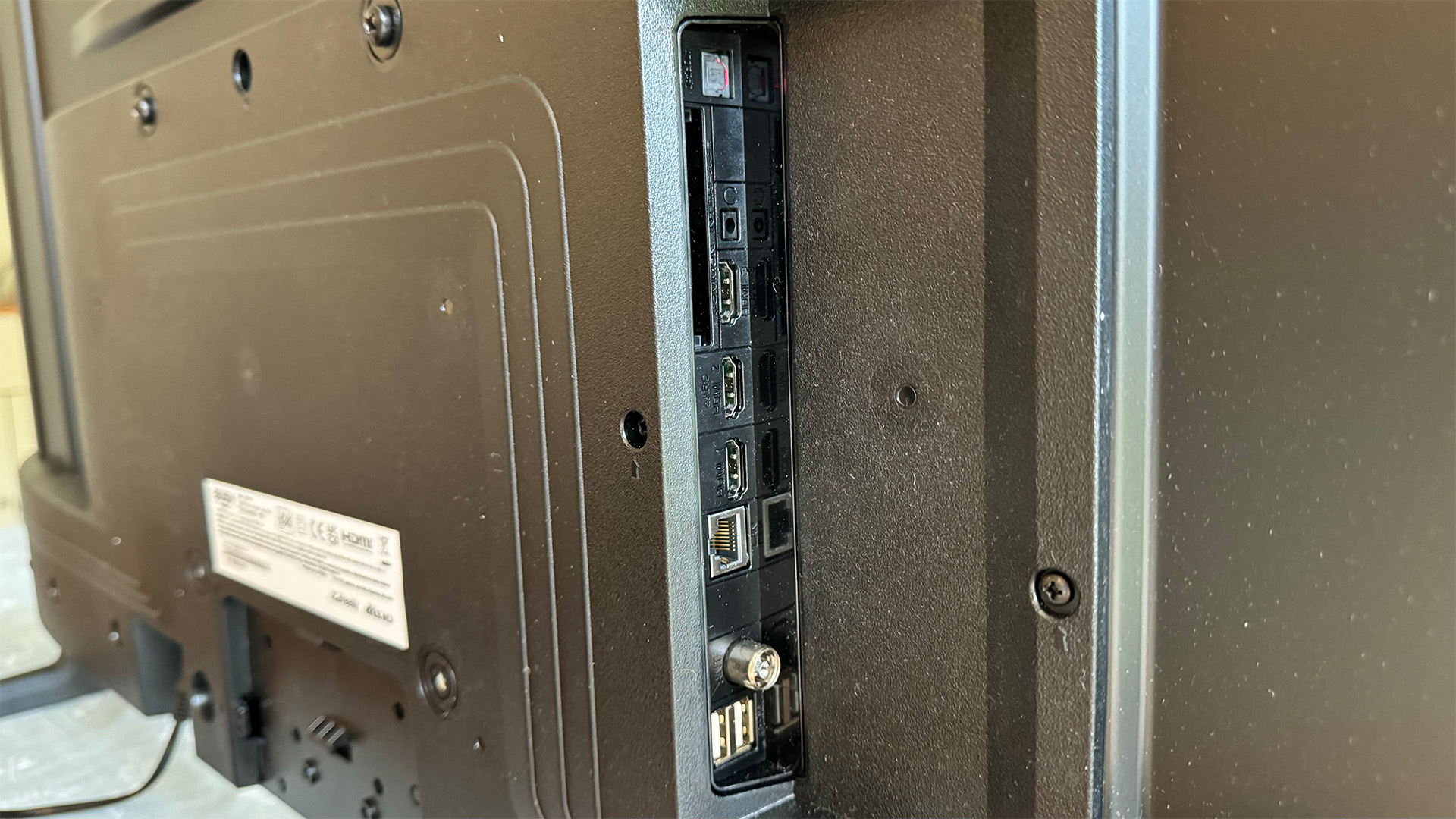
The 50UT24SB’s connections comprise three HDMIs, two USBs, an ethernet port, a Common Interface slot for the built-in tuner, and an optical digital audio output. The HDMIs support ALLM switching for games consoles and PCs, as well as, surprisingly, variable refresh rates. This VRR support only works up to the TV’s maximum 60Hz refresh rate, though; unsurprisingly, there’s no 120Hz gaming support.
In its Game preset the 50UT24SB gets the time it takes to render images down to an extremely respectable 10.2ms. There’s a Dolby Vision game setting, too, so that you can still enjoy responsive gaming in Dolby’s premium HDR format.
The Dolby Vision support extends to video sources as well as gaming, of course, and is accompanied by the more common HDR10 and HLG HDR formats. The Dolby connection extends, too, to Dolby Atmos sound playback – though it may only get limited value from this given that it only carries a 2 x 10W speaker system.
The 50UT24SB is built, finally, around a VA type of panel, and illuminated by LEDs placed directly behind the screen. This sort of set up typically delivers better contrast than TVs that use IPS panels and edge lighting. Not surprisingly for its money, though, there’s no Quantum Dot colour system or local dimming control.
Picture
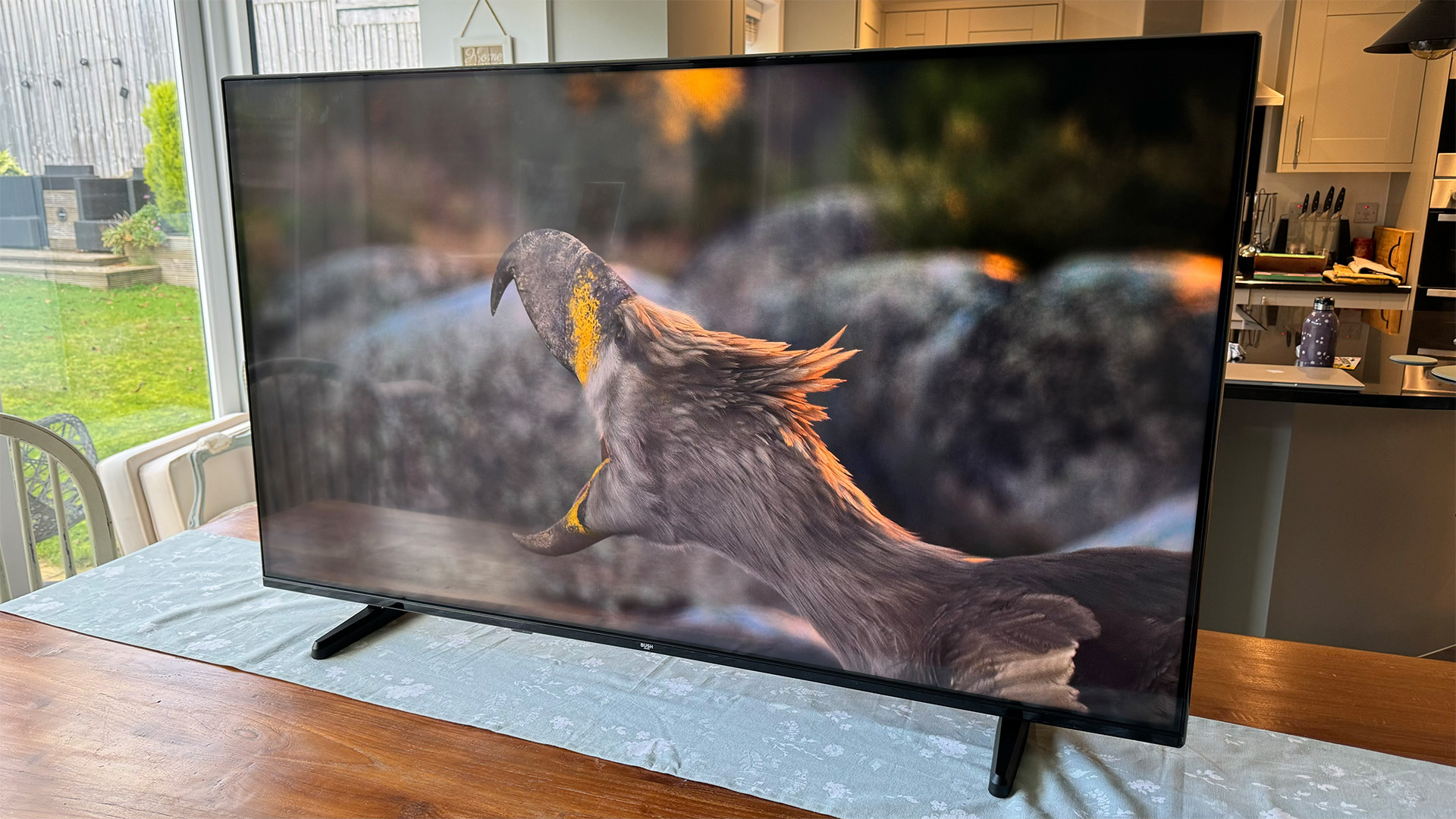
The Bush 50UT24SB’s pictures are better than you have any right to expect from a sub-£300 50-inch TV.
While dark scenes are always a particularly tough challenge for the budget TV world given their relative lack of light control features, for instance, the 50UT24SB handles them pretty well. The tell-tale pall of greyness that hangs over dark shots is mild enough to neither become a major distraction nor obscure subtle shading details. It’s also impressively consistent across the screen, rather than some parts of the screen looking cloudier than others.
The 50UT24SB can adjust its light output in response to the image content you’re watching, and this is handled carefully enough to ensure it doesn’t cause any obvious brightness instability either within a dark sequence or during sharp cuts between light and dark shots.
All this means that dark scenes look as three-dimensional and generally credible as bright ones, enabling the 50UT24SB to maintain an immersive level of consistency with even quite dynamic HDR movies; that’s rarely found on a budget TV.
It probably helps the 50UT24SB’s dark scene performance that it’s not exactly the brightest HDR TV around. Neither full-screen daylight HDR shots nor peak HDR brightness highlights look truly, spectacularly HDR, as they can on a typical mid-range or premium TV these days. There is enough brightness with HDR, though, to deliver at least a visible step up in intensity and light range versus SDR images, and the management of the limited amount of light available is good enough to stop HDR images from looking artificially compressed or truly dull. Even the very brightest HDR points are handled without too much subtle detail being clipped out of them.
The 50UT24SB also handles colour better than most budget TVs. Its screen doesn’t make any extravagant wide colour gamut claims, but it still manages to produce richer tones in dark and bright scenes alike than we’d expected to see. There’s at least a little visible step up in saturations with HDR content over SDR, too, rather than HDR actually looking more washed out than SDR as can happen with TVs that try to deliver more brightness than their colour systems can sensibly sustain.
The 50UT24SB’s limited brightness does limit the volume of colour the 50UT24SB can deliver, of course. Colours with HDR sources can look a touch coarse, too. But the set’s decent vibrancy and generally quite natural core tones mean colours still look typically more authentic and balanced than you will ordinarily find with such an affordable TV – especially when playing Dolby Vision sources in the set’s Dolby Vision Bright mode (the Dolby Vision Dark alternative takes too much brightness out of the picture for comfort, so is best avoided).
The 50UT24SB’s slight lack of colour subtlety doesn’t stop native 4K pictures from enjoying plenty of sharpness and detail, either. Especially with game sources. You never feel in doubt that the 50UT24SB is a 4K TV, despite its fairly modest screen size.
There are a couple of other signs of the 50UT24SB’s budget nature that we need to report. The provided motion processing system delivers rather crude results and is typically best left switched off. Games that can’t hit a constant 60Hz refresh rate can look and feel a little awkward at times, even with VRR active. Upscaled HD pictures can look a touch coarse compared (unfairly) with more expensive TVs. Dark HDR scenes sometimes look a touch noisy – especially, oddly, in the otherwise strong Dolby Vision Bright picture mode. Plus, finally, the 50UT24SB’s viewing angles before contrast and colour fall away dramatically are extremely narrow.
These sorts of things are more or less to be expected with such a cheap TV, though. Whereas the many things the 50UT24SB gets relatively right certainly aren’t.
Sound
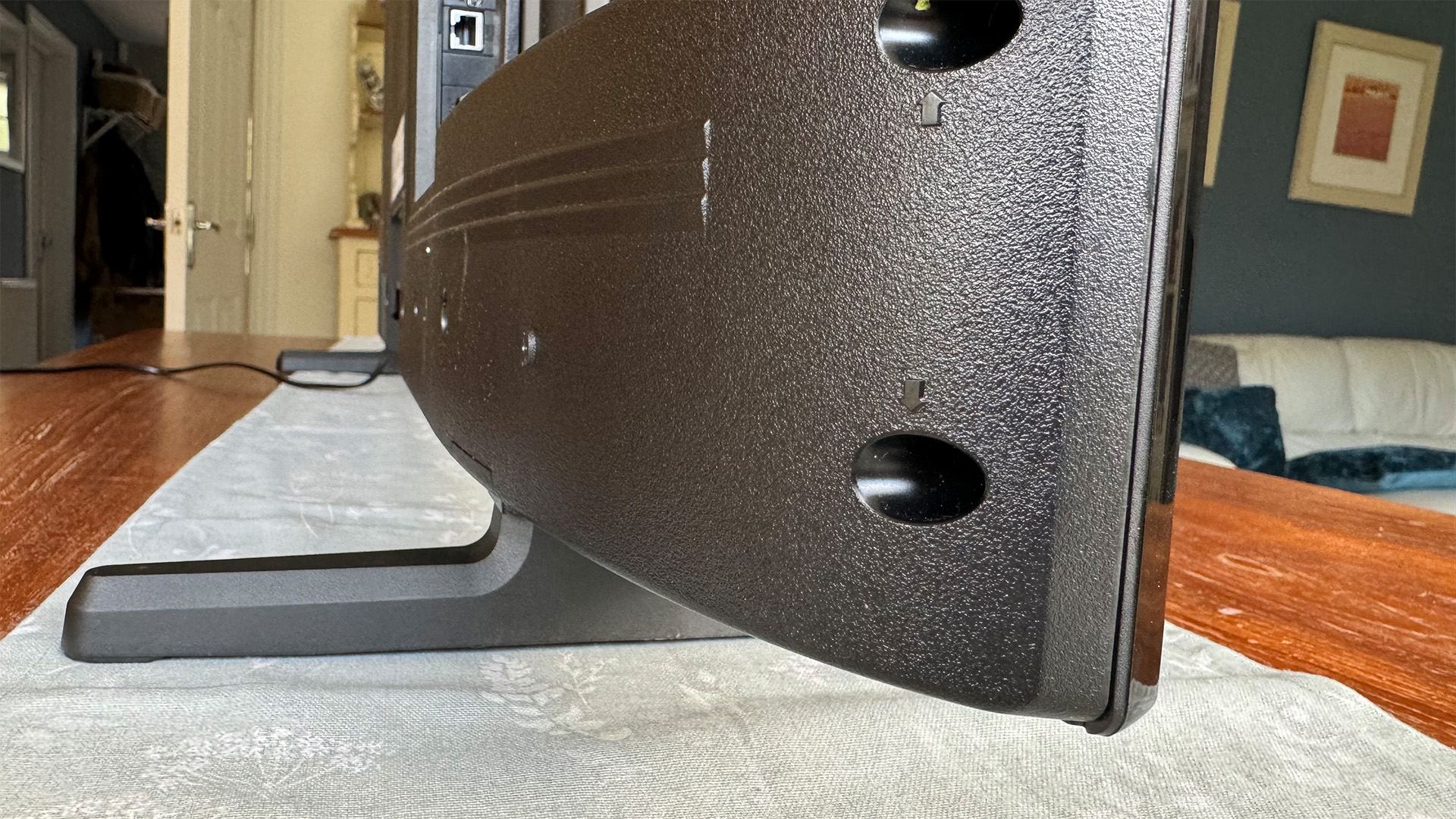
The Bush 50UT24SB’s sound doesn’t impress against its budget peers as much as its pictures do. The main issue is a near total lack of bass, leaving loud, dense soundtrack moments sounding thin and short of impact. The bass shortage means high-pitched sounds can become over-dominant and harsh, too, while male voices can sound a little thick and constrained. The sound doesn’t project out of the TV with much conviction, either.
The speakers are sensitive enough to produce quite a bit of detail when they’re not overwhelmed by dense movie moments, though, and the harsh, brittle tone also only really becomes apparent at quite extreme moments. So the 50UT24SB’s sound is at least adequate for the majority of your viewing time – which is probably about fair enough for under £300.
Verdict

While the Bush 50UT24SB is very much par for the budget TV course where its sound and build quality are concerned, its picture quality and, especially, smart features are more than good enough to make it not just cheap but a serious bargain.
SCORES
- Picture 4
- Sound 3
- Features 4
MORE:
Read our review of the Amazon Omni 50-inch
Also consider the Samsung UE55CU8000
Best 50-inch TVs: the best mid-sized sets we've tested for every budget
John Archer has written about TVs, projectors and other AV gear for, terrifyingly, nearly 30 years. Having started out with a brief but fun stint at Amiga Action magazine and then another brief, rather less fun stint working for Hansard in the Houses Of Parliament, he finally got into writing about AV kit properly at What Video and Home Cinema Choice magazines, eventually becoming Deputy Editor at the latter, before going freelance. As a freelancer John has covered AV technology for just about every tech magazine and website going, including Forbes, T3, TechRadar and Trusted Reviews. When not testing AV gear, John can usually be found gaming far more than is healthy for a middle-aged man, or at the gym trying and failing to make up for the amount of time he spends staring at screens.
